There are two types of hair loss: non-scarring (non-cicatricial) and scarring (cicatricial).
Non-scarring alopecias are far more common, with androgenetic alopecia being the most common type of hair loss.
On the other hand, there’s scarring alopecia, which is less common and far more distressing because it’s always permanent.
In this guide, we’ll take a look at some of the more commonly discussed types of hair loss.
What Are The Different Types Of Hair Loss?
There are many different types of hair loss, some of which are as follows:
Androgenetic Alopecia
According to the American Academy of Dermatology Association (AAD), androgenetic alopecia is the most common cause of hair loss worldwide.
Both men and women can develop this non-scarring alopecia. Studies have shown that its risk increases with age.
People in their 30s have a 30% chance of developing it, while people in their 90s have a 90% chance of developing pattern baldness.
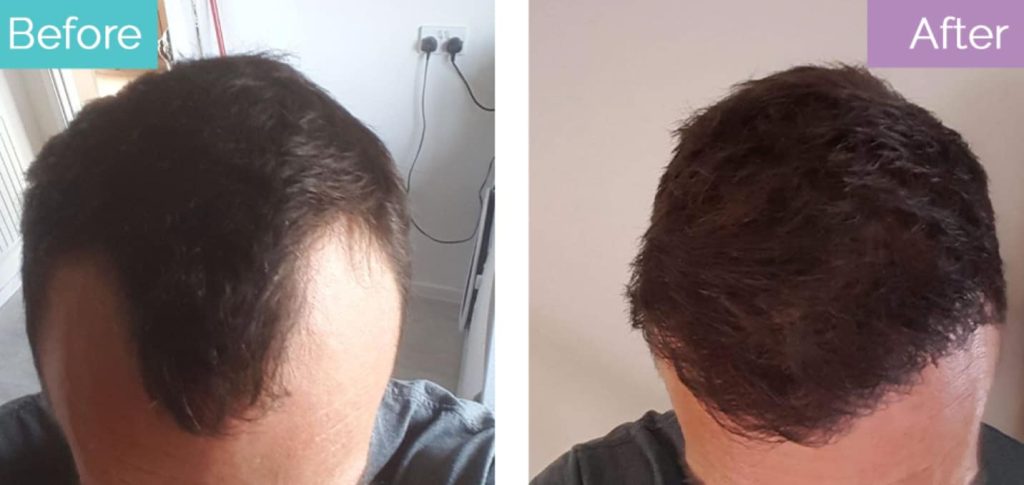
This kind of hair loss results due to a combination of genetic, environmental, and hormonal factors.
The pattern of this hair loss is different in both men and women. In males, it results in an “M” and then “U” shaped recession of the hairline with thinning of the crown.
However, in females, a Christmas tree pattern takes shape. There are, of course, exceptions to this.
Alopecia Areata
Alopecia areata is a non-scarring chronic alopecia that occurs due to an autoimmune disorder.
An individual’s immune system starts attacking its own healthy cells, including those in the hair follicles. This results in the formation of small, smooth, and circular coin-sized patches.
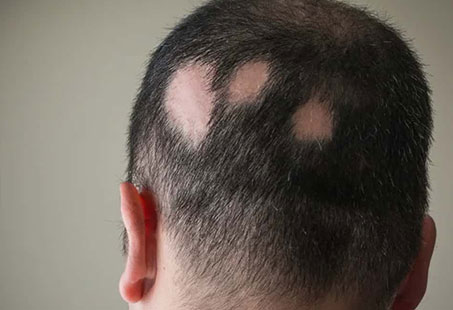
It is possible for people with alopecia areata to also have another autoimmune condition, such as lupus or vitiligo. Alopecia areata can also affect the nails in 10-15% of cases.
According to the National Alopecia Areata Foundation (NAAF), it can affect not just the scalp but also eyelashes, eyebrows, beards, and extremities and has the following types:
- Alopecia Totalis – Complete loss of scalp hair.
- Alopecia Universalis – Complete loss of entire body hair.
- Persistent Alopecia – Loss of hair in patches. It does not progress to alopecia totalis or universalis.
- Diffuse Alopecia – Thinning occurs all over the scalp and not just in one area.
- Ophiasis Alopecia – Loss of hair on the sides and back of the scalp.
According to American Skin Association, about 20% of people with alopecia areata also have a relative with the same condition, suggesting a genetic basis.
It can also be triggered by stress. The condition is relatively common. It has no cure; topical corticosteroid injections into the scalp are used for its treatment.
Telogen Effluvium
Telogen effluvium is the kind of non-cicatricial hair loss that occurs 3-4 months after the occurrence of a stressful event.
It pushes 70% of the hair from the anagen phase of the growth cycle to the telogen phase. The “stress” in this case may be any of the following:
- Pregnancy
- Childbirth
- Illness (e.g. COVID, HIV, syphilis, graves’ disease)
- Medication
- Surgery
- Hormonal changes (e.g. thyroid hair loss)
- Weight loss
- Nutritional deficiencies (iron, vitamin)
- Difficult life transitions (divorce, death)
This is another one of the most common causes of hair loss, as it can affect any person at any point in their life.
However, women are likely to experience it, leading to diffuse hair loss.
This kind of hair loss is sudden, and it can take 3-6 for regrowth to take place.
Traction Alopecia
One of the common causes of hair loss in women is traction alopecia. The tension on the hair strands due to tightly pulled back, curled, or knotted hairstyles can result in their breakage.
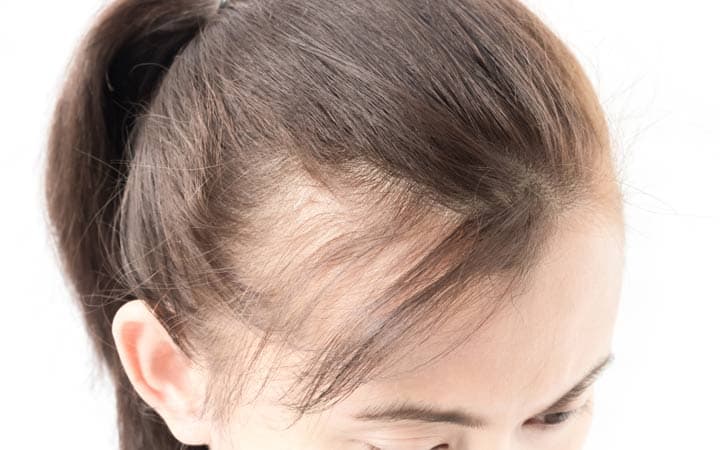
According to the AAD, regrowth is not possible in this kind of hair loss. It is preventable, though. Also, this type of hair loss can be both non-scarring and scarring (in the later states).
Because of certain hairstyles like braids, cornrows, and dreadlocks, traction alopecia is more common in African women.
However, this can also affect men who wear their hair in tight buns or ponytails. Excessive grooming can also result in traction alopecia in the beard.
Anagen Effluvium
Anagen effluvium is an abnormal shedding of the hair in the anagen phase of hair growth. It’s a common side effect of cancer treatments like chemo and radiotherapy.
However, it can also be drug-induced or occur due to heavy metal intoxication. It’s also been reported in some health problems like COVID and syphilis.
Keep in mind that at any given time, around 90% of the hair is in the active anagen growth phase. So, when it’s interrupted in anagen effluvium, it affects the majority of the hair.
Hair loss can begin a week or month after the problematic event and continue as long as the hair is exposed. Usually, however, anagen effluvium is reversible. It’s also non-scarring.
Loose Anagen Syndrome
Loose anagen syndrome is a diffuse, non-cicatricial hair disorder that most commonly affects blonde girls between the ages of 2 and 5.

In this condition, the hair in the active anagen phase is loosely anchored to the scalp. And its characteristic feature is that the hair is easily and painlessly pulled out.
Other than that, the hair is also matted, tangled, unruly, and thin. It’s not easily manageable. Affected individuals also tend to have “bed hair” when the hair at the back stands up straight.
This condition doesn’t require any treatment since it tends to go away on its own. Still, minoxidil has been prescribed to promote hair regrowth in loose anagen syndrome.
Cicatricial Alopecia
Cicatricial or scarring alopecia refers to the kind of hair loss in which damaged hair follicles are replaced by scar tissue.
Its exact cause is not known, but in primary scarring alopecia, inflammation is what destroys the hair follicles. There are many different forms of cicatricial alopecia. A few examples of it are as follows:
- Central centrifugal cicatricial alopecia
- Chronic cutaneous lupus erythematosus
- Lichen planopilaris (and its variants frontal fibrosing alopecia and Graham-Little syndrome)
- Folliculitis decalvans
- Pseudopedale of Brocq
The treatments for scarring alopecia are aimed at stopping and controlling hair loss. Other than that, camouflage and surgical options like scalp reduction or hair transplant can be considered.
Trichotillomania
Falling in the spectrum of obsessive-compulsive disorder (OCD), trichotillomania is a repeated urge to pull hair out from different areas of the body, including the scalp and facial hair.
It is one of the causes of hair loss in both men and women, affecting them almost equally. This type of hair loss can also be both non-scarring and scarring (if the hair is pulled for a long time).
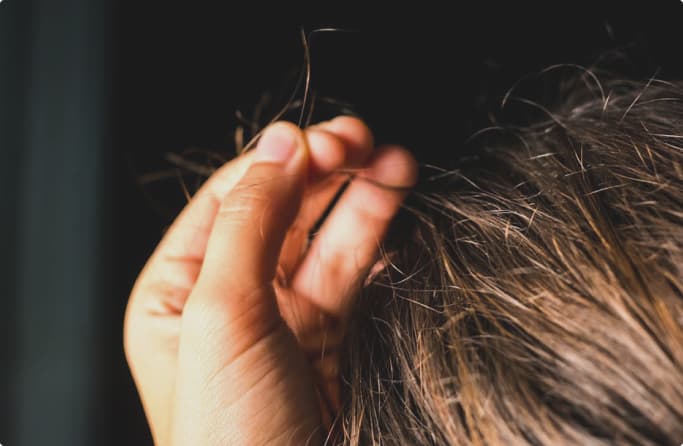
Females, however, develop it earlier, around the age of 14, compared to males, who develop it around the age of 19.
One way it is diagnosed (and distinguished from other causes of hair loss) is that the regrowth takes place at different lengths. This kind of hair loss can be permanent if done repeatedly for a long period of time.
Diffuse Alopecia
It is common for different types of hair loss to occur in distinct patterns or result in round or oval patches.
But sometimes, hair loss affects the entire scalp and results in generalised thinning. This is known as diffuse alopecia, and there are different reasons why it can happen.
For instance, hair loss due to telogen effluvium is diffuse. But some skin conditions and drugs can also cause hair loss all across the scalp.
Depending on the underlying cause of hair loss, it can be scarring or non-scarring. Telogen effluvium is non-scarring, but lichen planopilaris can be diffuse and scarring, for example.
Treatments for this type of hair loss can include PRP injections, minoxidil, finasteride, and changes to diet and lifestyle.
Traumatic Alopecia
Traumatic alopecia is what occurs when there is skin trauma on the scalp. This can be a result of the following:
- Accidents
- Friction
- Extreme pressure
- Chemical injury
- Heat damage
This kind of hair loss is not always permanent. However, if the trauma is repeated over a long period of time, it can become irreversible.
Involutional Alopecia
Involutional or senile alopecia is a type of non-scarring hair loss that occurs due to the natural process of ageing.
You will see that your hair grows more slowly as you get older, it won’t get too long, and it will become thinner as well.
Oxidative stress, changes to the hair follicles and the hair growth cycle are believed to play a role in involutional alopecia.
And while it’s not possible to reverse this type of hair loss, medications and a healthy diet might be able to help.
Tinea Capitis
Tinea capitis is a fungal infection of the scalp, which is most common in children. It’s also contagious.
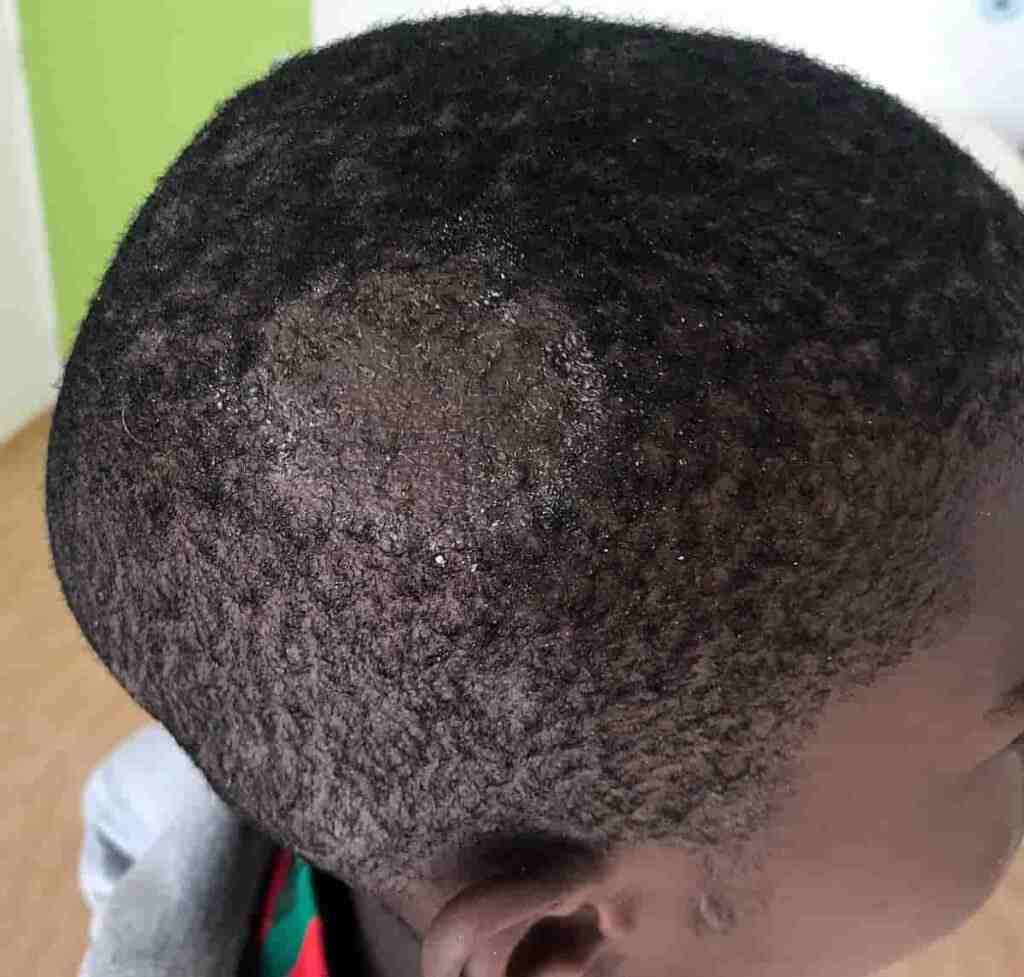
You can catch it by coming into contact with an infected person or sharing their hair accessories. Animals can also pass it on to you.
Round, scaly patches appear on the scalp, and it can also cause itchiness. The hair also becomes easy to break.
Fortunately, this condition can be cured with anti-fungal medication and shampoo. However, in more severe cases, it can cause scarring and permanent hair loss.
Hypotrichosis
Hypotrichosis is a rare genetic disorder that affects the growth of hair on the scalp, face and body.
Hair is normal at birth, but then it grows sparse. And by adulthood, most of the hair is lost.
Even when the hair is there, it doesn’t go past more than a few inches. It remains short, dry, tightly curled, and also tends to be lighter in colour.
Unfortunately, there’s no treatment for this type of hair loss. This type of hair loss is also non-scarring.
Conclusion
It’s important to understand that there are many different types of hair loss. And you may be suffering from more than one hair loss type at a given time.
That’s why you shouldn’t jump to any conclusions on your own. You need to consult a board-certified medical professional for an accurate diagnosis and treatment plan.
While there are many hair loss products available in the market, they would only work if they address the underlying cause of hair loss.


